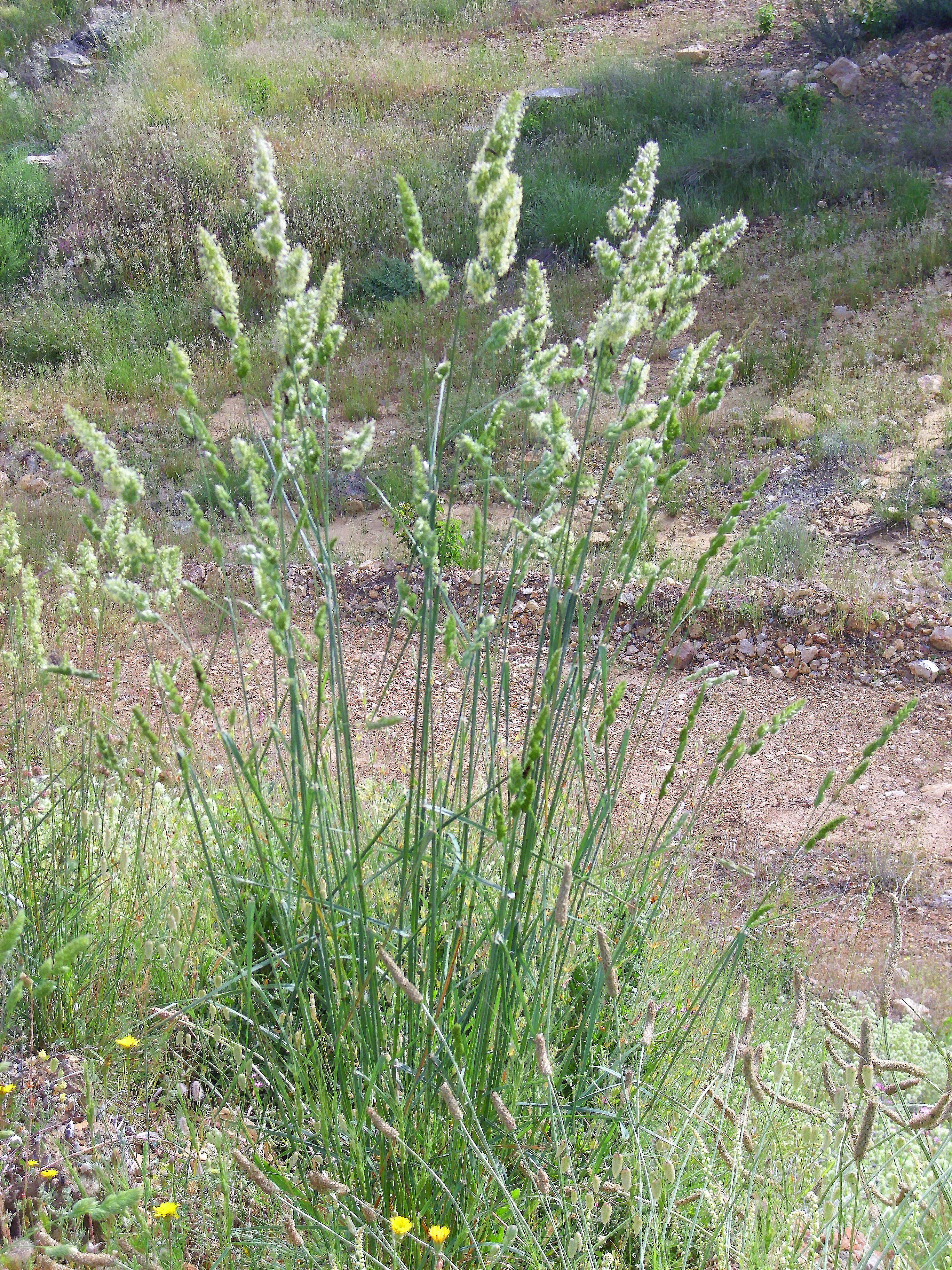Orchard grass (Dactylis glomerata) is a fodder crop related to perennial cereal grasses.

Source: commons.wikimedia.org©Javier martin (CC BY-SA 3.0)
Economic importance
Thanks to its rapid development, it can already produce a high yield of excellent quality fodder in the spring. In spring, it develops 3 times faster than meadow timothy, surpasses other cereal grasses in terms of spring regrowth and after mowing.
Well suited for grassing pastures and eroded lands.
In a mixture with alfalfa, it is included in cotton irrigated crop rotations.
Cultivation areas
Orchard grass team has become widespread in the Non-Chernozem zone, especially in the central and western regions, in the irrigated regions of Central Asia, in the North Caucasus and southern Ukraine, where it gives good yields.
Yield
Under favorable conditions, the yield of hay is 4-5 t/ha.
Botanical description
Orchard grass (Dactylis glomerata L.) is a perennial grasses of a loose shrub type.
The root system is fibrous, penetrates the soil to a depth of 100 cm.
Stems erect, 60-150 cm high, well leafy. When overgrown, the stems become rough.
The leaves are wide and long.
The inflorescence is a compressed panicle.
The fruits are membranous, trihedral, gray in color. Weight of 1000 seeds 1.2 g.
Biological features
Orchard grass team refers to moisture-loving plants. Poorly tolerates flooding in the spring.
Winter hardiness is high. In terms of drought resistance and shade tolerance, it surpasses timothy grass and fescue, and is inferior to them in winter hardiness.
Demanding on soils. It grows well on drained and developed lowland bogs, loamy and clayey soils.
Plant nutrition
For the formation of 1 and orchard grass hay, the team consumes from the soil 23-25 kg N, 4-5 kg P2O5, 36-38 kg K2O. It responds well to the application of nitrogen fertilizers, the introduction of increased rates of which allows you to get up to 50 t/ha of green mass (Estonian Research Institute of Agriculture and Land Reclamation).
The introduction of liquid manure fraction as top dressing in the conditions of the central regions of the Non-Chernozem zone is most effective in the spring and after the first mowing.
Vegetation
In the first year of the orchard grass life, the team forms vegetative shoots with long leaves. Plants reach full development in the third year of life. Type of development – winter.
Flowering in June, seed ripening ends in early July.
Agrotechnology
Usually sown in grass mixtures with perennial leguminous grasses under the cover of winter and spring cereal crops or annual grasses. Soil cultivation and crop care are the same as for the legume component.
The seeding rate when sowing in pure form is 14-20 kg/ha, with a wide-row method to obtain seeds – 8-9 kg/ha. In grass mixtures of field crop rotations, the norm is 7-8 kg/ha, in grass mixtures in the Non-Chernozem and Forest-Steppe zones – 11-12 kg/ha, in grass mixtures in the North Caucasus – 8-10 kg/ha.
Harvesting of the testes of the orchard grass of the team is carried out by combining in the phase of full ripeness of the seeds.
Sources
Crop production / P.P. Vavilov, V.V. Gritsenko, V.S. Kuznetsov and others; Ed. P.P. Vavilov. – 5th ed., revised. and additional – M.: Agropromizdat, 1986. – 512 p.: ill. – (Textbook and textbooks for higher educational institutions).
Fundamentals of agricultural production technology. Agriculture and crop production. Ed. V.S. Niklyaev. – M .: “Epic”, 2000. – 555 p.